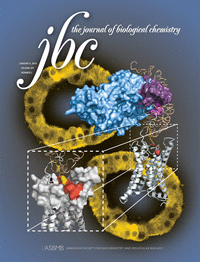- Submit a Protocol
- Receive Our Alerts
- Log in
- /
- Sign up
- My Bio Page
- Edit My Profile
- Change Password
- Log Out
- EN
- EN - English
- CN - 中文
- Protocols
- Articles and Issues
- For Authors
- About
- Become a Reviewer
- EN - English
- CN - 中文
- Home
- Protocols
- Articles and Issues
- For Authors
- About
- Become a Reviewer
Virus Binding and Internalization Assay for Adeno-associated Virus
Published: Vol 7, Iss 2, Jan 20, 2017 DOI: 10.21769/BioProtoc.2110 Views: 12919
Reviewed by: Yanjie LiAngela CoronaKristin Shingler

Protocol Collections
Comprehensive collections of detailed, peer-reviewed protocols focusing on specific topics
Related protocols
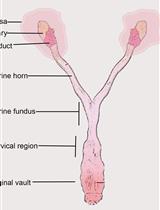
Transcervical Mouse Infections with Chlamydia trachomatis and Determination of Bacterial Burden
Karthika Rajeeve and Rajeeve Sivadasan
Feb 5, 2020 5881 Views

Isolation and Quantification of Extracellular DNA from Biofluids
Ľubica Janovičová [...] Peter Celec
Aug 20, 2020 4925 Views
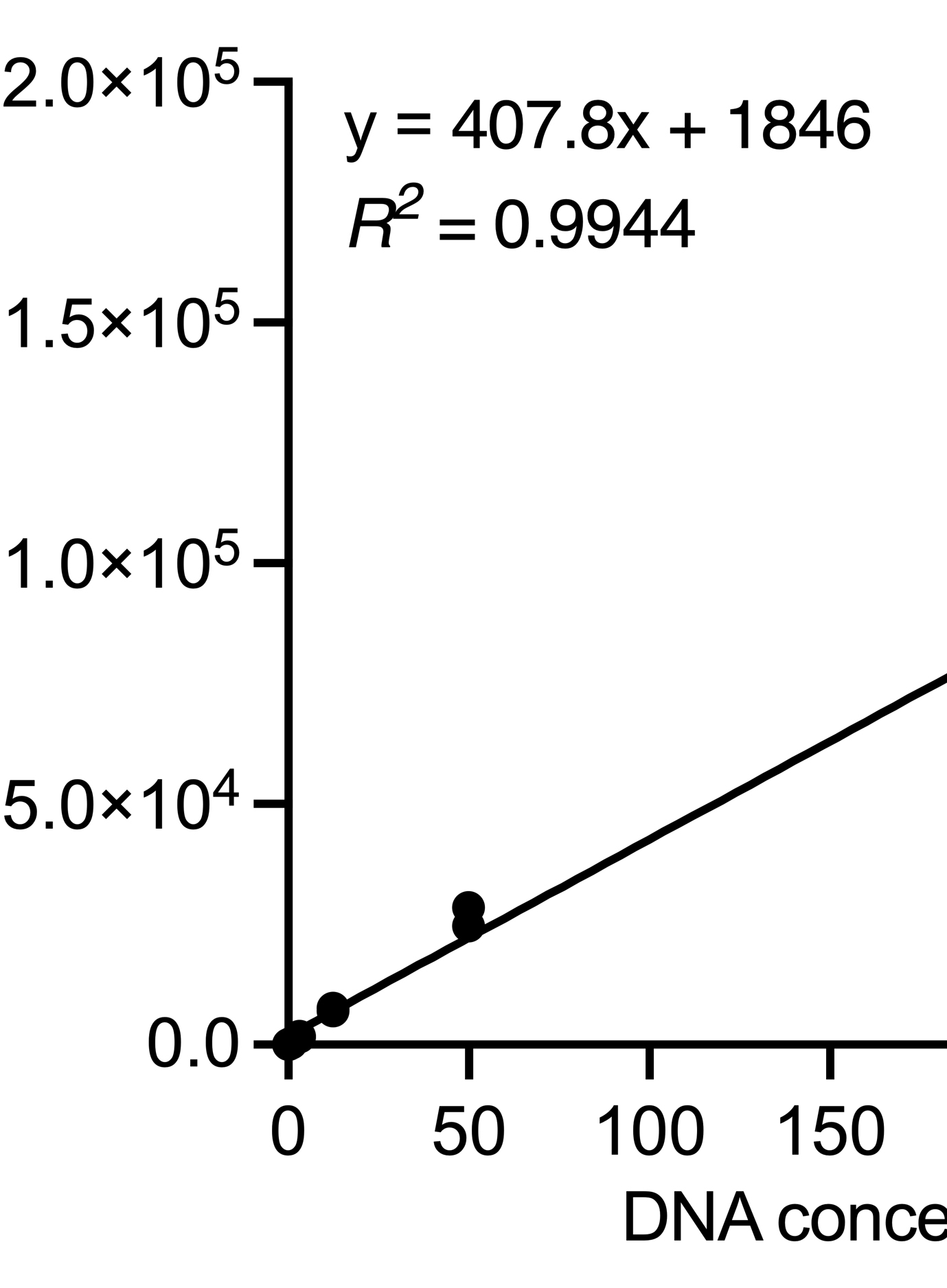
Amplification and Quantitation of Telomeric Extrachromosomal Circles
Nathaniel J. Robinson and William P. Schiemann
Mar 5, 2023 2012 Views
Abstract
The binding and internalization of adeno-associated virus (AAV) is an important determinant of viral infectivity and tropism. The ability to dissect these two tightly connected cellular processes would allow better understanding and provide insight on virus entry and trafficking. In the following protocol, we describe a quantitative PCR (qPCR) based method to determine the amount of vector bound to the cell surface and the amount of subsequent virus internalization based on viral genome quantification. This protocol is optimized for studying AAV. Nevertheless, it can serve as a backbone for studying other viruses with careful modification.
Keywords: Adeno-associated virusBackground
Studies that assess AAV biology generally use transgene expression as the experimental endpoint. However, there are a number of critical steps AAV must successfully navigate before it reaches the nucleus and transduces the cell. Therefore, there are multiple distinct steps in the AAV infectious pathway that could be disrupted individually or collectively, leading to altered transduction. Assessment of AAV binding and internalization are important first steps in determining the cause of transduction differences observed upon cellular modification by small molecules, CRISPR-based gene knockout, siRNA-based gene knockdown, or other experimental procedures.
Materials and Reagents
- 12-well tissue culture (TC) treated plates (Corning, catalog number: 3513 )
- GeneMate 1.7 ml microcentrifuge tubes (BioExpress, catalog number: C-3262-1 )
- Tips
- Lightcycler 96-well qPCR plates (Roche Molecular Systems, catalog number: 04729692001 )
- Cell lifter (Corning, catalog number: 3008 )
- HeLa cells (ATCC, catalog number: CCL-2 )
- Purified single-stranded AAV (any serotype) (Grieger et al., 2012)
- 1x PBS (Thermo Fisher Scientific, GibcoTM, catalog number: 14190144 )
- DNeasy Blood and Tissue Kit (QIAGEN, catalog number: 69504 )
- Molecular grade water (Mediatech, catalog number: 46-000-C )
- DMEM (Thermo Fisher Scientific, GibcoTM, catalog number: 11995065 )
- Trypsin-EDTA (Thermo Fisher Scientific, GibcoTM, catalog number: 25300054 )
- Fetal bovine serum (FBS) (Sigma-Aldrich, catalog number: F2442 )
- 100x penicillin/streptomycin (Thermo Fisher Scientific, GibcoTM, catalog number: 15140122 )
- FastStart Essential DNA Green Master Mix (Roche Molecular Systems, catalog number: 06402712001 )
- Virus-specific qPCR primers (at a working concentration of 20 µM each)
- fLuc-F – AAAAGCACTCTGATTGACAAATAC
- fLuc-R – CCTTCGCTTCAAAAAATGGAAC
- Human genomic qPCR primers (at a working concentration of 20 µM each)
- hLB2C1-F – GTTAACAGTCAGGCGCATGGGCC
- hLB2C1-R – CCATCAGGGTCACCTCTGGTTCC
- 10 ng/μl CBA-fLuc plasmid stock solution (see Recipes)
- 100 ng/μl HeLa genomic DNA stock solution (see Recipes)
Equipment
- Pipette
- Biosafety cabinet
- CO2 tissue culture incubator (NuAire, model number: NU-5500 )
- Tabletop centrifuge (Eppendorf, catalog number: 022620401 )
- Lightcycler 96 qPCR instrument (Roche Molecular Systems, catalog number: 05815916001 )
- PCR plate microcentrifuge (VWR, catalog number: 89184-608 )
Procedure
- Notes:
- While the use of HeLa cells is described, any cell type can be used, provided the cells remain attached to the plate after several cold PBS washes. If other cell types are used, a proper genomic DNA control will be needed for the qPCR step. Additionally, if non-human cells are used, a set of mLamin primers (or other genomic control) will need to be designed, tested, and used for the qPCR step.
- While virus packaging the fLuc transgene is described, any transgene can be used, provided transgene-specific qPCR primers are designed, tested, and used.
- Since the binding and internalization assays are separate, the number of wells used must be doubled. Half of the wells will be used for the binding assay, and the other half of the wells will be used for the internalization assay.
- Cell preparation for virus binding and internalization assay
- Seed 12-well TC plate with 1e5 HeLa cells/well (Figure 1), bringing the well to a final volume of 1 ml. Allow 4-6 h for the cells to fully adhere to the plate at 37 °C in 5% CO2 in a tissue culture incubator.
Note: If the cells are to be treated with small molecules, treat cells with the compound and vehicle control prior to 4 °C incubation. The amount of incubation time necessary for any small molecule will need to be determined prior to performing this assay. - Incubate cells at 4 °C for 30 min.
- Infect cells with AAV at a multiplicity of infection (MOI) of 1e3 vector genomes per cell (vg/cell) by carefully pipetting virus into the meniscus of the media near the edge of the well, taking care not to scrape the well surface. Slowly rock the plate by hand several times to mix.
Notes:- If the stock concentration of AAV is highly concentrated, the virus can be diluted in DMEM prior to infection.
- MOI can be altered to suit individual needs.
- If the stock concentration of AAV is highly concentrated, the virus can be diluted in DMEM prior to infection.
- Incubate cells at 4 °C for 1 h to allow virus to bind to the cell surface.
- Wash cells gently 3 times with 400 µl ice-cold PBS to remove unbound virus by tilting the plate towards you and adding PBS very slowly to the edge of the well with a pipette.
Note: For each sample, one well will be used for binding, and the other well will be used for internalization.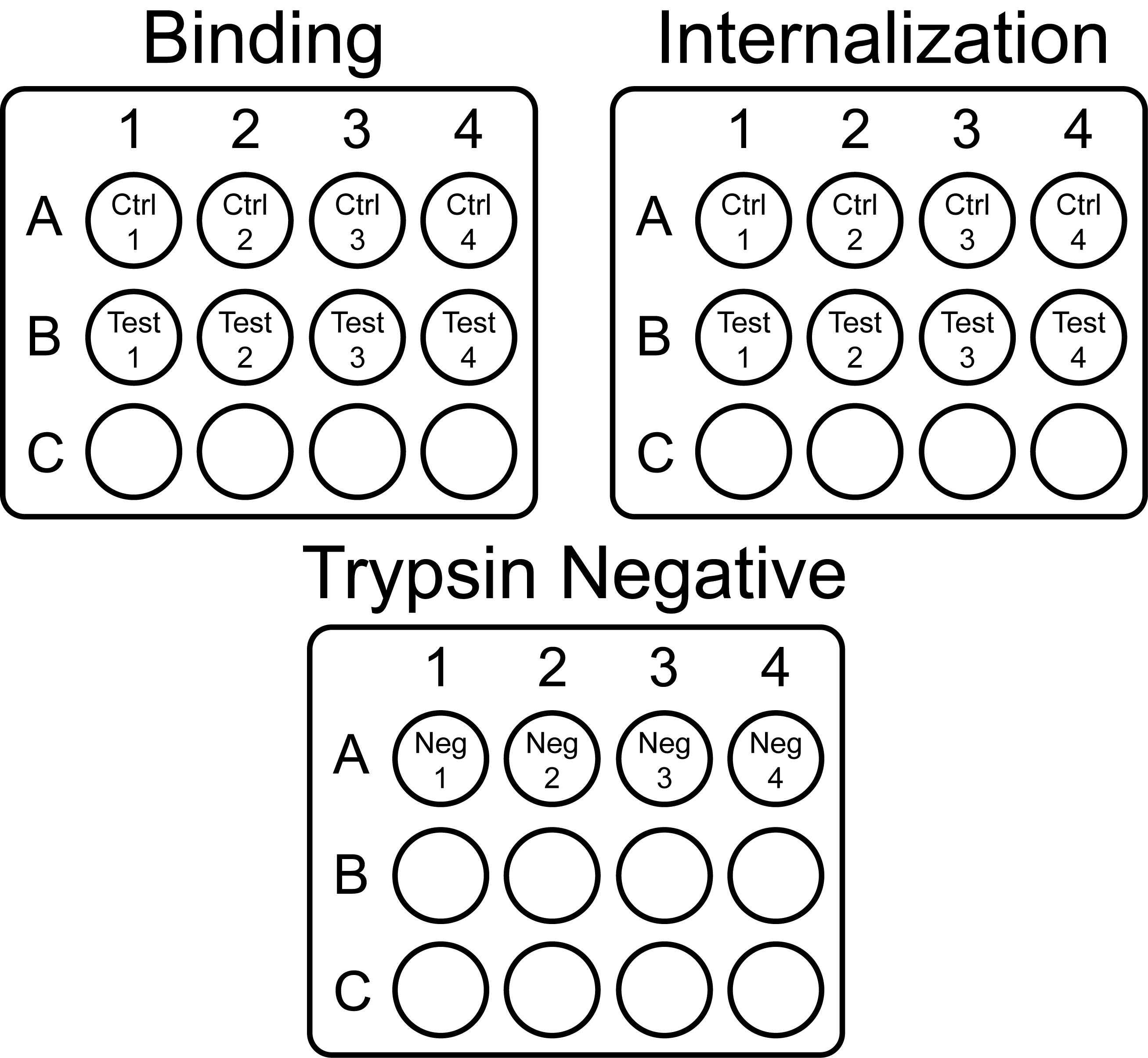
Figure 1. Example of experimental plate setup. Example of the plate setup for a binding and internalization experiment. The Trypsin Negative plate is a negative control that is trypsinized immediately after binding is performed.
- Seed 12-well TC plate with 1e5 HeLa cells/well (Figure 1), bringing the well to a final volume of 1 ml. Allow 4-6 h for the cells to fully adhere to the plate at 37 °C in 5% CO2 in a tissue culture incubator.
- Binding (1 well)
- Add 200 µl PBS to each well.
- Scrape off the cells and transfer them to a 1.7 ml microcentrifuge tube.
- Isolate total DNA using a QIAGEN DNeasy Blood and Tissue Kit, following manufacturer instructions with the following exception: use 50 µl of molecular grade water to elute sample from the column.
Note: To increase DNA yield, the water can be heated to 37 °C prior to elution, and the water can be allowed to sit on the membrane for up to 5 min.
- Add 200 µl PBS to each well.
- Internalization (1 well)
- Carefully add 1 ml fresh complete DMEM, pre-warmed to 37 °C, to the cells by tilting the plate towards you and adding very slowly to the edge of the well with a pipette.
- Incubate at 37 °C in 5% CO2 in a tissue culture incubator for 1 h to allow for virus internalization.
Note: The amount of time to allow internalization can be varied, or several time points can be assayed to generate an internalization curve. - Remove the media by aspiration and treat the cells with 1 ml trypsin to detach them from the plate and to remove surface bound virions that did not internalize.
- Transfer the trypsinized cells to a 1.7 ml microcentrifuge tube and pellet cells by centrifuging at 500 x g for 3-5 min at room temperature.
- Carefully remove trypsin without disturbing the cell pellet.
- Wash the cell pellet 3 times by resuspending the cells in 200 µl PBS, pelleting by centrifugation 500 x g for 3-5 min, and carefully removing the PBS.
- After the final PBS wash, resuspend the cell pellet in 200 µl PBS.
- Isolate total DNA using a QIAGEN DNeasy Blood and Tissue Kit, following manufacturer instructions with the following exception: use 50 µl of molecular grade water to elute sample from the column.
- Carefully add 1 ml fresh complete DMEM, pre-warmed to 37 °C, to the cells by tilting the plate towards you and adding very slowly to the edge of the well with a pipette.
- qPCR quantification
- fLuc transgene (or transgene of choice):
- Generate standard curve for vector genome quantitation using plasmid containing the CBA-fLuc transgene.
- Dilute a 10 ng/µl plasmid stock 1:200 in molecular grade water to generate a plasmid solution of 5 x 104 fg/µl.
- Perform 7 further serial dilutions of 1:5 in molecular grade water to generate the remainder of the standard curve, with the remaining points of the standard curve having the following concentrations: 1 x 104 fg/µl, 2 x 103 fg/µl, 4 x 102 fg/µl, 8 x 101 fg/µl, 1.6 x 101 fg/µl, 3.2 x 100 fg/µl, and 6.4 x 10-1 fg/µl.
Note: If there is space on the qPCR plate, 2 standard curves should be used to make quantitation more accurate. In addition, this would allow exclusion of abhorrent points within the standard curve.
- Dilute a 10 ng/µl plasmid stock 1:200 in molecular grade water to generate a plasmid solution of 5 x 104 fg/µl.
- Prepare master mix (Table 1) for n + 1 reactions (with n being the total number of reactions).
Table 1. qPCR master mix
Note: To prepare a working stock of F + R primers, mix F primer (20 µM concentration) with R primer (20 µM concentration) in a 1:1 ratio. The resulting primer mixture will have both F and R primers at a concentration of 10 µM each. - Load 8 µl master mix in each well.
- Load 2 µl of each sample, including standard curve.
Note: Adding the sample directly to the side of the well assures complete loading of the sample. - Spin the plate in a microplate centrifuge for 30-60 sec at room temperature to assure samples are at the bottom of the wells.
Note: The VWR microplate centrifuge used has a maximum speed of 500 x g. An adjustable microplate centrifuge can be used at 500-600 x g. - Run the qPCR using the corresponding program in Table 2.
Table 2. qPCR cycling parameters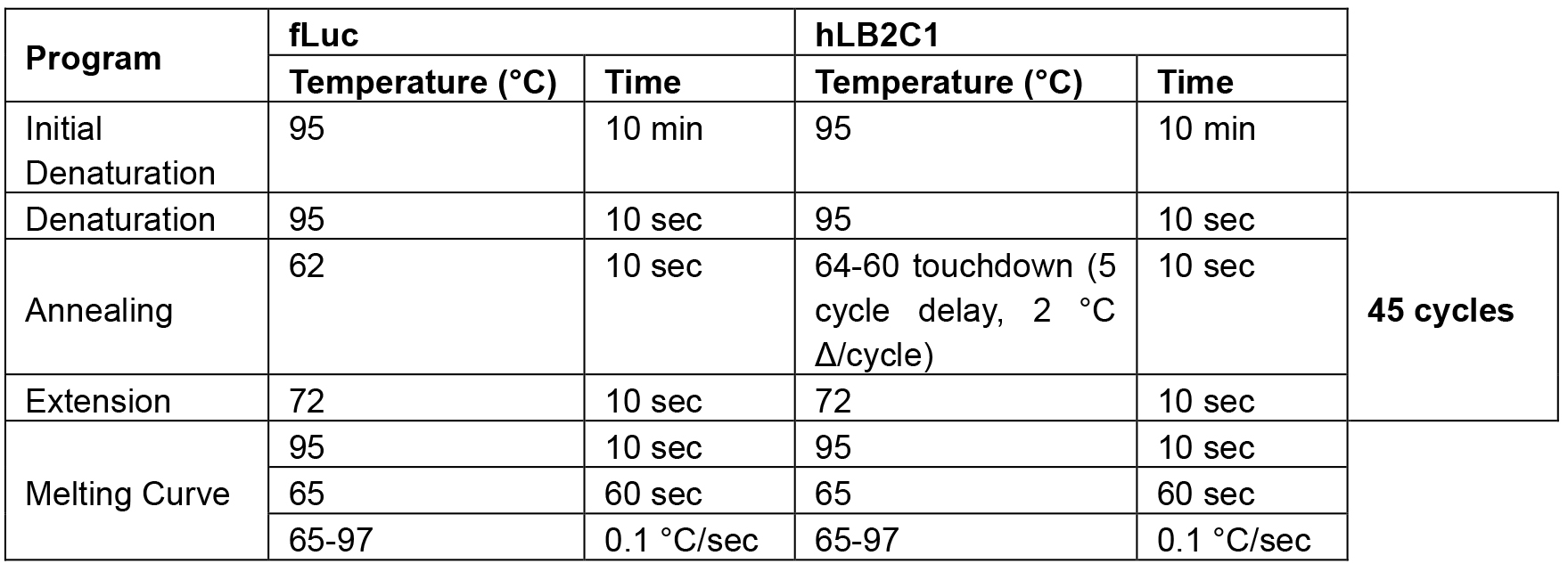
- Generate standard curve for vector genome quantitation using plasmid containing the CBA-fLuc transgene.
- hLB2C1 genomic gene
- Generate standard curve for cellular genome quantitation using pre-prepared HeLa cell isolated DNA.
- Dilute a 100 ng/µl genomic DNA stock solution 1:2 in molecular grade water to generate a genomic DNA solution of 50 ng/µl.
- Perform 7 further serial dilutions of 1:2 in molecular grade water to generate the remainder of the standard curve with the remaining points of the standard curve having the following concentrations: 25 ng/µl, 12.5 ng/µl, 6.25 ng/µl, 3.125 ng/µl, 1.563 ng/µl, 0.781 ng/µl, 0.391 ng/µl.
- Dilute a 100 ng/µl genomic DNA stock solution 1:2 in molecular grade water to generate a genomic DNA solution of 50 ng/µl.
- Prepare master mix (Table 1) for n + 1 reactions (with n being the total number of reactions).
- Load 8 µl master mix in each well.
- Load 2 µl of each sample, including standard curve.
Note: Adding the sample directly to the side of the well assures complete loading of the sample. - Spin the plate in a microplate centrifuge for 30-60 sec at room temperature to assure samples are at the bottom of the wells.
Note: The VWR microplate centrifuge used has a maximum speed of 500 x g. An adjustable microplate centrifuge can be used at 500-600 x g. - Run the qPCR using the corresponding program in Table 2.
- fLuc transgene (or transgene of choice):
Data analysis
To calculate the number of vector genomes per cell (Table 3), use the following calculations:
- The vector genome copy number is calculated by taking the absolute DNA value derived from the standard curve and multiplying by the number of single-stranded plasmid copies in 1 femtogram of plasmid (270 copies/fg for pTR-CBA-fLuc).
Note: This value is calculated using the formula below, where 1e15 equals the number of femtograms in a gram, and 650 equals the molecular weight of a DNA base pair. Additionally, the value must be multiplied by a factor of 2 because AAV genomes are single stranded.
Copy number = 2 x ([6.022 x 1023]/[plasmid size in bp x 1 x 1015 x 650]) - The number of diploid genomes is calculated by taking the absolute DNA value derived from the standard curve and dividing by the number of human diploid genomes per nanogram of DNA (167 genomes/ng).
Note: There is ~6 pg of genomic DNA per diploid human genome. Therefore, in each nanogram of genomic DNA, there are ~167 diploid genomes. - The number of vector genomes per diploid genome is calculated by dividing the total number of vector genomes by the number of diploid genomes.
- Binding data is expressed as vg/cell (Figure 2). Internalization can be also expressed as vg/cell. Alternatively, internalization can be expressed as a percentage of bound virions by dividing the number of internalized vg/cell by the number of bound vg/cell (Figure 2).
Table 3. Sample data analysis
*Note: This is the absolute DNA value resulting from qPCR with either Luc primers or hLB2C1 primers.
The P-value is determined using a two-tailed Student’s t-test assuming homoscedasticity. In addition: it is important to run both internalization negative controls (trypsinized cells immediately after binding) and the proper qPCR (water-only) negative controls. Furthermore, independent experiments can be run on the same qPCR plate.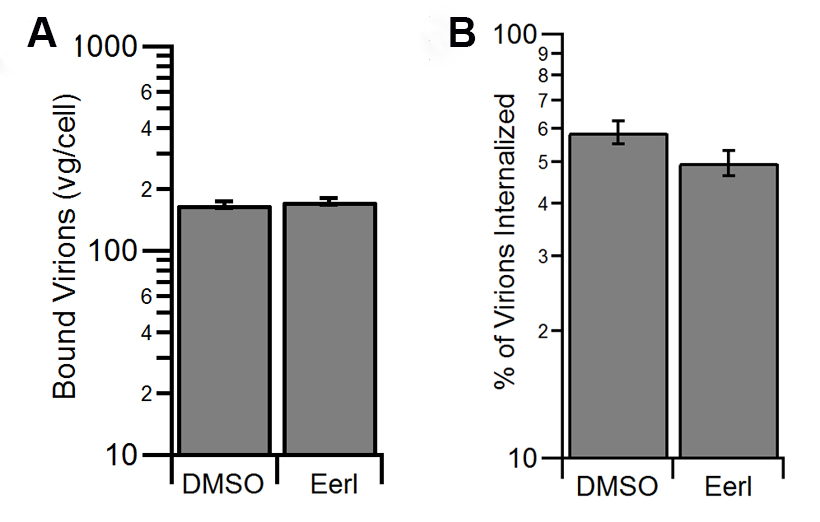
Figure 2. Example binding and internalization data from cells treated with the VCP inhibitor Eeyarestatin I (EerI). A. EerI does not alter binding of AAV2 to HeLa cells. B. EerI does not significantly alter internalization of AAV2.
Recipes
- 10 ng/μl CBA-fLuc plasmid stock solution
2 µl plasmid in 398 µl molecular grade water - 100 ng/µl HeLa genomic DNA stock solution (1:2)
50 µl genomic DNA in 50 µl molecular grade water
Acknowledgments
This study was supported by National Institutes of Health Grants R01HL089221 and P01HL112761 through the NHLBI. This work was also supported by National Institutes of Health Training Grant 5T32 GM007092 through the NIGMS. The protocol described herein was based on the following paper: Berry et al. (2016).
References
- Berry, G. E. and Asokan, A. (2016). Chemical modulation of endocytic sorting augments adeno-associated viral transduction. J Biol Chem 291(2): 939-947.
- Grieger, J. C. and Samulski, R. J. (2012). Adeno-associated virus vectorology, manufacturing, and clinical applications. Methods Enzymol 507: 229-254.
Article Information
Copyright
© 2017 The Authors; exclusive licensee Bio-protocol LLC.
How to cite
Readers should cite both the Bio-protocol article and the original research article where this protocol was used:
- Berry, G. E. and Tse, L. V. (2017). Virus Binding and Internalization Assay for Adeno-associated Virus. Bio-protocol 7(2): e2110. DOI: 10.21769/BioProtoc.2110.
- Berry, G. E. and Asokan, A. (2016). Chemical modulation of endocytic sorting augments adeno-associated viral transduction. J Biol Chem 291(2): 939-947.
Category
Immunology > Complement analysis > Virus
Molecular Biology > DNA > DNA quantification
Do you have any questions about this protocol?
Post your question to gather feedback from the community. We will also invite the authors of this article to respond.
Share
Bluesky
X
Copy link



